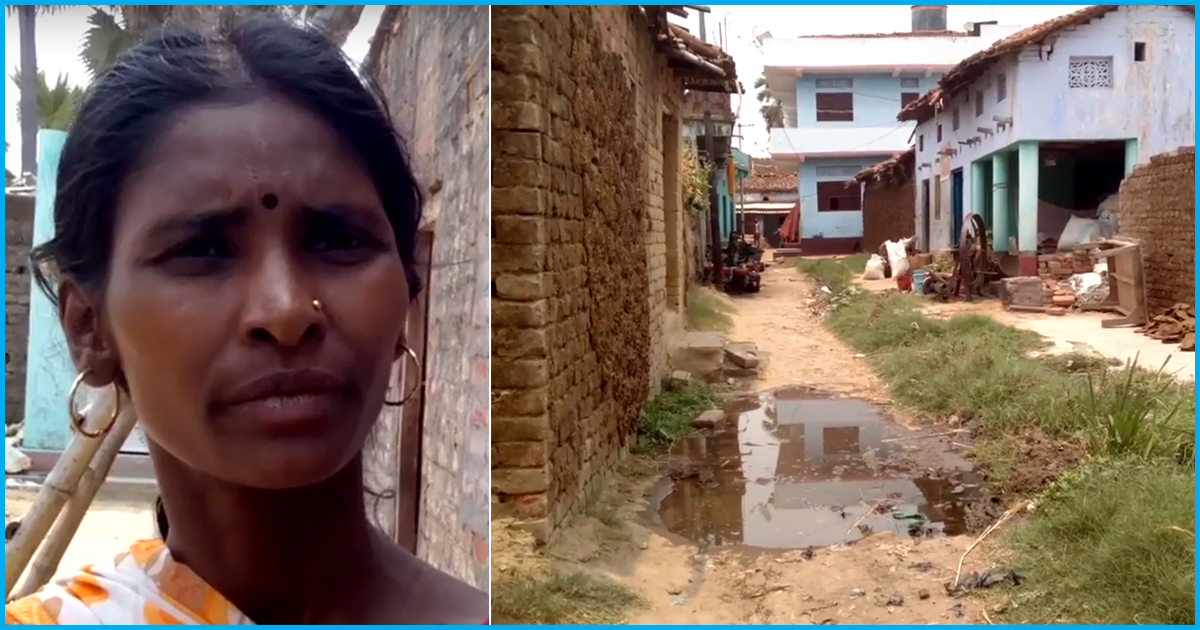
The Ground Realities Of An ‘Ideal Village’ In Bihar’s State Capital
20 Sep 2018 12:45 PM GMT
Despite being adopted under the Sansad Adarsh Gram Yojana, Sonmai is a village deprived of economic opportunities, education facilities, public infrastructure and even food security.
When the Sansad Adarsh Gram Yojana was announced by Prime Minister Narendra Modi four years ago, many Parliamentarians ‘adopted’ villages in their constituencies promising holistic development. As the scheme entered its third and final phase last year, the number of adopted villages kept dwindling. As for those villages that were adopted in the first phase, few have managed to create a prototype of the ideal village that the scheme espoused. Community Correspondent Manoj Kumar visits one such village in Patna, the state capital.
Adopted by Ram Kripal Yadav, a Bharatiya Janta Party Member of Parliament from the Patliputra constituency, Sonmai is a village in Patna’s Dhanarua block. Yadav, along with some of his colleagues were called out for selecting villages in the vicinity of Patna rather than remote villages with lower development indices and fewer opportunities. However, despite its proximity to the vibrant state capital, Sonmai is still a village bereft of economic opportunities, education facilities, public infrastructure and even food security.
“I still haven’t gotten my ration card, how will I feed and educate my children? We rear animals for a living but we don’t even get any support from the government to do that. Neither do we have any kind of financial assistance to educate our children,” says Kiran Devi, a resident.
Free and compulsory education is a fundamental right under the Right to Education Act of 2009 and Sonmai does have a school and also an anganwadi. But the condition of the school is so poor that women like Kiran have only one option — private they cannot afford. The anganwadi is functional, but the workers there don’t even know when they were last paid their honorarium. Keeping anganwadi workers underpaid and overworked is cited as one of the main reasons behind the failure of the mission to combat malnutrition in children.
The only signs of development that the village bears after being adopted are individual toilet units next to each house. Cemented and coated with paint, the toilets almost look out of place in contrast to the shabby, often mud-thatched homes. Moreover, they don’t have water so no one uses them, says Kiran, wishing that the government had instead built them houses.
Checking boxes for the sake of meeting development targets under schemes like Swachh Bharat is not unheard of, but when development is not bottom-up and participatory, it defeats its very purpose. One of the central tenets of the Adarsh Gram Yojana is its participatory nature– political representatives, district and village-level administration and citizens are all supposed to be involved in deciding what is best for the village. The idea behind village adoption as a tool for rural development is that the village eventually becomes self-sufficient.
But Sonmai has a long, long way to go. As of now, it faces a water crisis, a shortage of health care and education facilities and is also off the rural connectivity map. The village has a sizeable Mahadalit population and an empty pillared hall bears a signboard saying Bihar Mahadalit Vikas Mission. The ‘mission’ seems to be doing nothing in the village, only plunging the community into further deprivation.
Support the community by calling the Member of Parliament Ram Kripal Yadav at +91-9431800966, and urging him to work on the different development parameters the village needs work on.
Published with the permission from Video Volunteers
 All section
All section













